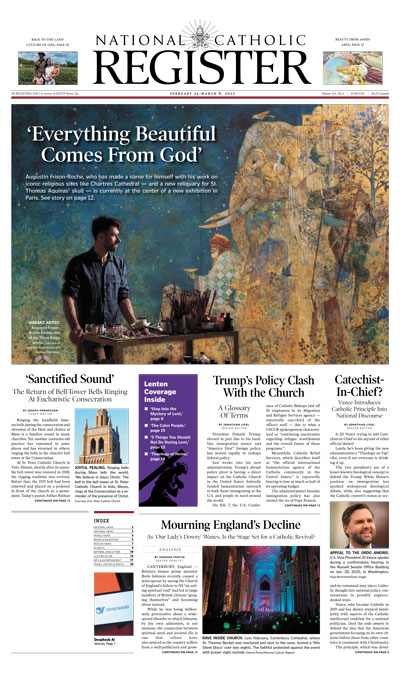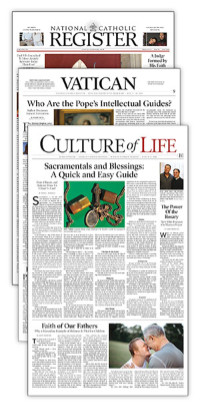Historic Chapel of Sorbonne University to Reopen to Public After 25 Years
The 17th-century Sainte-Ursule Chapel at the famous Sorbonne University is a silent, timeless witness to Paris’ Christian identity.

PARIS — The chapel of Paris’s emblematic Sorbonne University is to be restored and reopened to the public after being closed for more than 25 years due to its poor conditions.
The announcement by Paris City Hall follows the decision by the World Monuments Fund (WMF), Jan. 15, to include the chapel on its 2025 list of 25 sites worldwide in urgent need of preservation.
The building had been severely damaged by a storm in 1999. For the time being, however, the Sorbonne’s management has ruled out reopening the building to public worship, citing respect for the French principle of laïcité (secularism).
700 Years of History
“A kind of French history in miniature.” That’s how Mathilde Augé, executive director of the World Monuments Fund France, described Sainte-Ursule Chapel, part of the Sorbonne University architectural complex in the heart of the Latin Quarter, in Paris’ 5th arrondissement (administrative district). “It’s an exceptional place for its architecture, its pictorial decorations and its history.”
It is a fact that is now largely ignored, but the world-famous Sorbonne University, a hotbed of the progressive, atheistic intellectual left for the past 50 years, was originally founded as a theological college in 1253. It was named after its founder, Robert Sorbon, who was the chaplain and confessor of King St. Louis, who confirmed its foundation in 1257.
The chapel was subsequently erected and consecrated in 1326, before being completely rebuilt in the classical style in the 17th century by order of Cardinal de Richelieu, the prime minister of King Louis XIII, then head of the college. His tomb is still housed there to this day.
Built by architect Jacques Lemercier, the 1,000-square-meter (10,000-square-foot) monument was one of the first in the capital to feature a cupola and quickly established itself as a masterpiece of its style. The Baroque-inspired façade is enhanced by four statues representing St. Thomas Aquinas, Paris Bishop Pierre Lombard, bishop and theologian Jacques-Bénigne Bossuet and scholar Jean de Gerson.
The chapel’s refined interior features murals by Philippe de Champaigne, then one of the most renowned painters in the kingdom of France, while the monumental tomb of Richelieu, which stands in the choir facing the altar, was designed by sculptor François Girardon.
The destructive fury of the French Revolution at the end of the 18th century did not spare the monument, which was looted and vandalized, while the tomb of Richelieu, who represented absolute monarchy in the eyes of the revolutionaries, was desecrated.
The chapel’s condition continued to deteriorate in the 19th and 20th centuries, but it regained symbolic significance when its crypt was used to house the graves of high-school students and teachers who fought in the Second World War.
The violent storm that hit France in the winter of 1999 completed two centuries of decay, causing significant water infiltration. The weakening of its structure and dome forced the authorities to close the monument to visitors, opening its doors only on the occasion of European Heritage Days once a year.
No Return to Catholic Worship
A press release issued by the city of Paris on Jan. 16 stated that the choir, cupola and organ loft would receive priority attention. Restoration work is also scheduled on the murals by Philippe de Champaigne, the paintings by Louis Charles Timbal, completed between 1873 and 1876, and the tomb of Richelieu. The work, estimated at several million euros, will be funded jointly by the city of Paris and WMF. The aim is to reopen the building to the public by 2030.
This decision could offer a second life to this chapel, which has had an unfortunate and thwarted destiny, its religious use having been regularly suspended since the French Revolution. The 1905 Law of Separation of Church and State formalized its closing to worship. This measure was suspended by the Vichy regime during the Second World War, before being reintroduced following the wave of student protests of 1968.
Over the past two centuries, the building, which remains a silent and timeless witness to the glorious era of Christianity in France, has mostly been relegated to a debating hall for university students or a conference or exhibition center.
This state of affairs may not change any time soon, according to Beaux-Arts magazine, which spoke to the Sorbonne’s chancellery. “If we open a Catholic place of practice in the university, we’ll have to do the same for other religions, which is not an option,” the chancellery said, referring instead to a desire to “reconnect with its past of intellectual effervescence” by hosting concerts, debates, lectures and guided tours.
Yet even at the height of anticlericalism in the early 20th century, and during the post-1968 years, a policy of “tolerance” allowed occasional Masses to be celebrated on the premises.
As the very existence of this chapel is inseparable from the country’s historic Catholic identity, placing it today on the same level as all the other religions imported into the country since then may surprise readers unfamiliar with French-style laicité, to which has more recently been added a globalist approach that opposes national identities and cultures.
In any case, young Catholics keen to see the building return to its original function, even if only occasionally, have five years to make their case.















